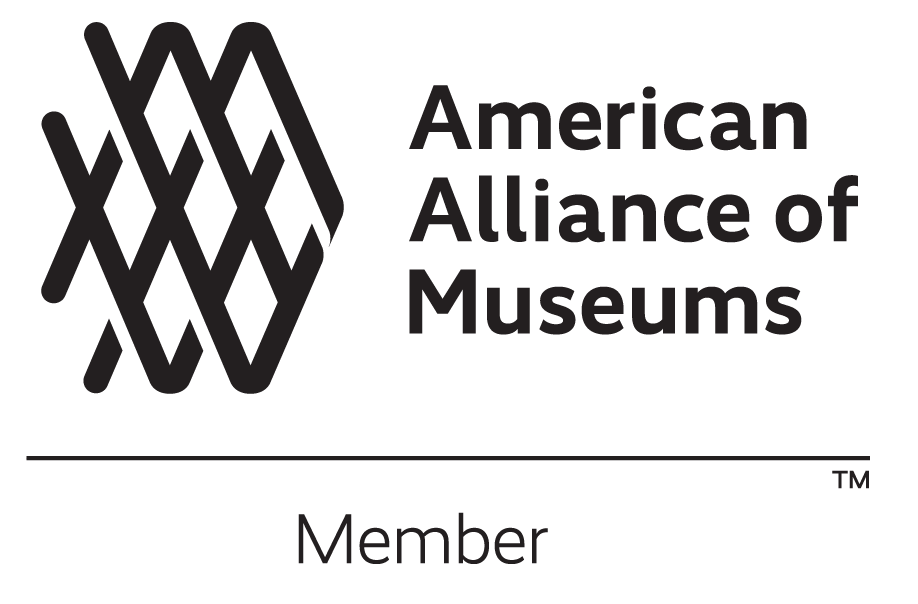The Stadt Huys, Lovelace Tavern, and the Excavation of History
by Allie Delyanis
In honor of Fraunces Tavern Museum’s first-ever Tavern Week, Communications & Marketing Coordinator Allie Delyanis explores the history of one of 54 Pearl Street’s forgotten neighbors: the Lovelace Tavern.
The Lovelace tavern is presumably on the left and the stadt huys is the building on the right.
Fraunces Tavern is one of the oldest bars in New York City (and one of the first restaurants to offer take-out), but across the street, at what is now 85 Broad Street, stands the remains of a tavern much older—the Lovelace.
Built in 1641, the Stadt Huys was the center of civic life in what was then New Amsterdam, serving as a waterside tavern and inn before being designated as the first City Hall in 1653.[1] It served as a meeting place, jail, debtors’ prison, and courthouse, all of which were packed into five or six stories.[2] At the time of its construction, it was the tallest building in the City. After the British took over Manhattan in 1674, they continued to use the Stadt Huys as City Hall.
Sir Francis Lovelace, the second English governor of New York, opened the Lovelace Tavern next door to the Stadt Huys in 1670. The two buildings operated side-by-side for nearly 30 years, with the Lovelace Tavern serving as a sort of annex, a place where political discussions were carried on late into the evening, long after the Stadt Huys itself closed its doors for the day.[3]
A century later, across the street, Fraunces Tavern (then known as the Queen’s Head Tavern) served a similar purpose: it was a dining hall with live entertainment, headquarters for the Sons of Liberty, and the birthplace of The New York Chamber of Commerce. [4]
"Sanitary & Topographical Map of the City and Island of New York (1865)", known as the Viele Map. This map shows the original waterline of Manhattan, along with the areas that were filled in.
When the Lovelace was in its prime, 54 Pearl Street was still an empty, landfilled water lot owned by Stephanus Van Cortlandt—the first native born mayor of New York City. The City began filling in land at the foot of Broad Street and up to the steps of the Stadt Huys in order to protect the buildings—which began popping up left and right—from water damage.
In the late 17th century, today’s Water, Front, and South Streets would be fully submerged every high tide. Historian Alice Morse Earle notes that “There was no street where the Stadt Huys stood; it was simply run up on the ‘Water Side.’”[5]
In her book Early American Taverns, author Kym S. Rice chronicles the history of the colonial American tavern throughout the late 17th and 18th centuries. She notes, “In a port city like Boston or New York, taverns were grouped in commercial districts usually on or near the water.”[6]
Located on the water the Lovelace Tavern and the Stadt Huys were, essentially, one in the same: a “watering hole” for merchants, politicians, and businessmen. Together, both buildings served as the pulse of 17th century life in lower Manhattan. While their proximity to the waterfront allowed both the Stadt Huys and the Lovelace Tavern to thrive, their respective location would also be the source of the demise of both buildings.
In 1654, a carpenter named Sybout Claesen—who lived along the shore west of the Stadt Huys—filed a complaint about the havoc wreaked by the regularly rising tides. Specifically, Claesen complained that he was the only person among his neighbors who ever made an attempt to combat the tides. He wondered why he should bother to maintain the integrity of his own structure, when no one else bothered to do the same.[7] Claesen’s formal complaint could be interpreted as a precursor to what we know today as a Homeowner’s Association.
By the time the city stepped in and began to build a retaining wall, however, the Stadt Huys had absorbed over a decade’s worth of attacks by the rising tides. The building was “propped up” with periodic repairs, though its fragility was difficult to overlook.[8] A 1688 account describes the state of the Stadt Huys as “most ruined and washed away by the sea.”[9]
Mayor William Merritt declared the Stadt Huys unusable in 1697 and refused to continue conducting business inside of it, for fear of the entire foundation collapsing. The Lovelace Tavern next door quickly became the substitute meeting place for all civic business and served as an interim City Hall for the next several years.
The city sold the decaying Stadt Huys and the land it sat on to a merchant named John Rodman in 1699, and constructed a new City Hall building in 1700 where Federal Hall stands today. [10]
In 1706, the Lovelace Tavern was torn down (some accounts blame a fire, while others claim the reason is unknown) and was re-allocated as commercial property for the City’s burgeoning merchant district.
Aerial view of the Fraunces Tavern historic block from the corner of Pearl and Broad street. 1970s.
Governor Lovelace himself didn’t have the same longevity as his tavern. The Dutch briefly regained control of Manhattan—between August 1673 and December 1674—and Governor Lovelace was called back to England and fully blamed for the ensuing chaos. He was imprisoned in the Tower of London, where he died in 1675. [11]
Centuries passed and in classic New York City fashion, buildings came and went. In 1979, construction crews working on a new building for Goldman Sachs unearthed the long-forgotten foundations of the Lovelace Tavern at 85 Broad Street—directly across the street from Fraunces Tavern. A photo from the Fraunces Tavern Museum Archive taken in the 1970s shows the patch of land as a half empty parking lot.
The City quickly stepped in and appointed Nan Rothschild and Diana Wall to lead a team of archeologists to excavate the site.[12] The team uncovered burned out floorboards and foundational remains which they quickly connected to the Lovelace Tavern using a plethora of maps, drawings, and historical accounts.[13]
According to the final archeological report published by the City of New York, the remains of the Stadt Huys were never uncovered.[14]
The building at 85 Broad Street was eventually completed; Goldman Sachs came and went. Today 85 Broad Street is home to a handful of companies, including Oppenheimer & Co., Nielsen, and Vox Media.
Employees from each company, we can safely assume, walk both next to and on top of the remains of the Lovelace Tavern each day. The remains are visible underneath several feet of thick plexiglass at its original home, about 100 feet from Fraunces Tavern.
[1] Lower Manhattan: South Street Seaport. (2016). In 920136887 722621191 C. Von Pressentin Wright (Ed.), Blue Guide New York (5th ed., p. 54). Blue Guides Limited.
[2] https://www.boweryboyshistory.com/2010/10/lovelace-tavern-early-new-york-history.html
[3] https://books.google.com/books?id=qZQ-AAAAYAAJ&pg=PA189&lpg=PA189&dq=lovelace#v=onepage&q=lovelace&f=false
[4] https://www.frauncestavernmuseum.org/history
[5] https://play.google.com/books/reader?id=qvJHAQAAMAAJ&hl=en&pg=GBS.PA42
[6] (Rice, K. S. (1983). Chapter 3: Urban Taverns. In Early American taverns: For the entertainment of friends and strangers (p. 31). Chicago: Regnery Gateway.
[7]https://books.google.com/books?id=qvJHAQAAMAAJ&dq=stadt%20huys&pg=PR1#v=onepage&q=stadt%20huys&f=false
[8] https://play.google.com/books/reader?id=qvJHAQAAMAAJ&hl=en&pg=GBS.PA66
[9]https://books.google.com/books?id=FvkbcWzAzjoC&pg=PA100&lpg=PA100&dq=Stadt+Huys+sold+for+920&source=bl&ots=ZdiOd0h9gk&sig=-xGLdqJkfVcOyeL1B4QRian2Xmc&hl=en&sa=X&ved=0ahUKEwjlzuKTp7bSAhVKj1QKHRyqD0AQ6AEIITAB#v=onepage&q=Stadt%20Huys%20sold%20for%20920&f=false
[10]https://books.google.com/books?id=FvkbcWzAzjoC&pg=PA100&lpg=PA100&dq=Stadt+Huys+sold+for+920&source=bl&ots=ZdiOd0h9gk&sig=-xGLdqJkfVcOyeL1B4QRian2Xmc&hl=en&sa=X&ved=0ahUKEwjlzuKTp7bSAhVKj1QKHRyqD0AQ6AEIITAB#v=onepage&q=Stadt%20Huys%20sold%20for%20920&f=false
[11] https://www.newenglandhistoricalsociety.com/francis-lovelace-founds-boston-post-road-1673/
[12] https://www.nytimes.com/1981/04/12/magazine/digging-up-our-urban-past.html?pagewanted=all
[13] https://blog.mcny.org/2016/04/19/smoking-drinking-and-governing-archaeology-of-the-lovelace-tavern/
[14] http://s-media.nyc.gov/agencies/lpc/arch_reports/514.pdf







